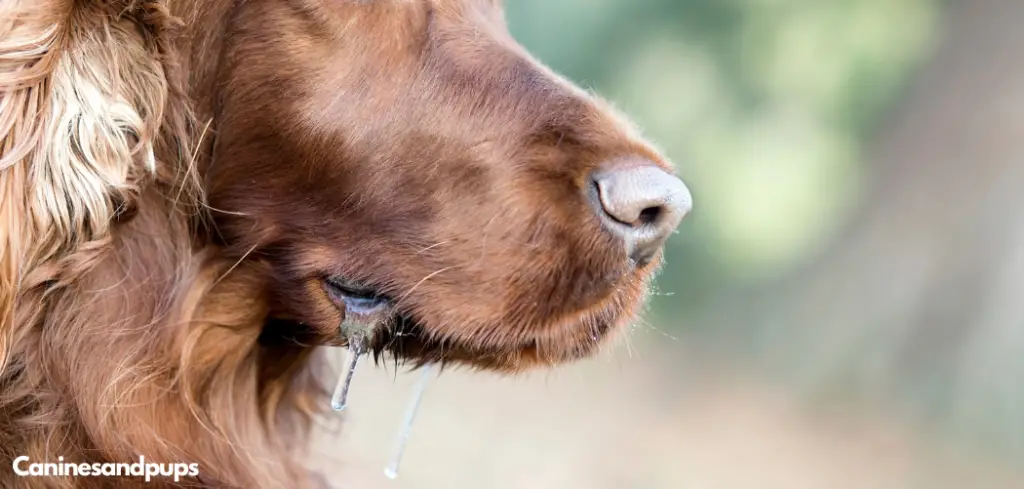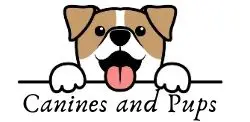If your dog is drooling excessively and shaking their head, you’re right to be concerned. While an occasional head shake or a bit of slobber is perfectly normal for most dogs, persistent drooling and frequent head shaking can signal an underlying issue.
We outline the potential causes of dog drooling and shaking head, what to look out for, and when you should seek veterinary help.
Table of Contents
Here’s Why Dog Drooling and Shaking Head Happens
Pitbull shaking and drooling can be signs of various underlying issues ranging from mild to serious. This combination often indicates that your dog is experiencing discomfort, nausea, pain, anxiety, or even poisoning. Shaking may occur due to muscle tremors, fear, or neurological problems, while drooling usually signals oral pain, nausea, or a reaction to toxins.
Together, these symptoms often point to conditions like gastrointestinal upset, toxin ingestion, dental issues, heatstroke, or stress.
Because these signs can signal emergencies such as poisoning or severe illness, it’s important to observe your Pitbull closely and seek veterinary care promptly if shaking and drooling persist or are accompanied by other symptoms like vomiting, weakness, or seizures.

Some dogs naturally drool more than others—especially breeds like Saint Bernards, Bloodhounds, and Mastiffs. Similarly, shaking the head occasionally can be a normal behavior, especially after waking up or during grooming.
However, excessive drooling and constant head shaking are signs that something could be wrong.
Common Causes of Dog Drooling and Shaking Head
1. Ear Infections
One of the most common causes of a dog shaking head and drooling at the same time is an ear infection.
Infections can affect either the outer ear (otitis externa) or deeper parts of the ear canal.
When an infection occurs, the ear becomes inflamed, itchy, and painful.
Your dog may shake their head vigorously and scratch at their ears. Drooling may occur due to discomfort or stress from the infection.
Symptoms to watch for:
Red or swollen ears
Foul odor from the ears
Discharge (brown, yellow, or bloody)
Head tilting or loss of balance
Bacteria, yeast, or ear mites are often the root causes. Dogs with floppy ears (like Cocker Spaniels) are particularly prone to ear infections due to poor air circulation.
2. Dental Problems
Another major reason for excessive drooling and head shaking in dogs is dental disease.
A sore tooth, gum infection, or oral abscess can cause significant discomfort, prompting your dog to drool more and shake their head in frustration or pain.
Signs of dental issues include:
Bad breath
Difficulty eating or chewing
Swollen or bleeding gums
Pawing at the mouth
Dental issues often cause a dog to tilt or shake their head to one side, particularly if the pain is localized.
Just like in humans, poor dental hygiene can lead to tartar buildup, gum disease, and infections that cause drooling and discomfort.
3. Foreign Object in the Mouth or Ear
If your dog suddenly starts shaking their head and drooling, it might be because something is stuck in their ear or mouth—like a grass seed, stick, or even a bug.
Common signs include:
Sudden head shaking or pawing at the ear or mouth
Visible discomfort or whining
Unilateral drooling (drool only on one side)
If not removed quickly, a foreign object can cause damage, infection, or even abscess formation.
Related: Understanding Dog Drooling and Runny Nose
4. Oral Irritation or Burns
Chemical burns, insect stings, or even chewing on irritating plants can cause oral pain, leading to excessive drooling in dogs and shaking of the head as they try to relieve discomfort.
Common irritants:
Household cleaners
Citrus peels
Electric cords (in puppies)
Toxic plants (like poinsettia or lilies)
If your dog ingested or chewed something toxic or caustic, contact your vet immediately.
5. Nausea or Motion Sickness
Just like people, dogs can get nauseous. Motion sickness, gastrointestinal upset, or certain medications may trigger drooling and occasional head shaking.
Symptoms include:
Lip licking or smacking
Vomiting or dry heaving
Lethargy
Refusing food
If the nausea persists or occurs frequently, it’s time to talk to your vet.
6. Neurological Issues
In rare cases, drooling and head shaking in dogs may be linked to neurological problems like vestibular disease or seizures.
These conditions can cause head tilting, imbalance, and disorientation, often accompanied by drooling.
Symptoms to watch:
Circling or falling over
Involuntary eye movement
Loss of coordination
Confusion or twitching
These signs warrant immediate veterinary attention.
Related: Understanding Dog Drooling and Swaying
7. Allergic Reactions
Dogs can have allergic reactions to food, insect bites, or environmental allergens.
Allergies can cause swelling in the mouth, lips, or ears—leading to head shaking and drooling.
Other allergy symptoms:
Itchy skin or hives
Facial swelling
Watery eyes or nose
Difficulty breathing (in severe cases)
If the reaction appears severe or includes breathing difficulties, treat it as an emergency.
8. Teething (In Puppies)
In puppies, drooling and shaking head is often caused by teething discomfort. As new teeth emerge, your puppy may drool more than usual and shake their head due to oral irritation.
Teething usually occurs between 3 to 6 months of age. Providing safe chew toys can help relieve their discomfort.
What You Should Do if Your Dog is Drooling and Shaking Head
If your dog starts drooling excessively and shaking their head repeatedly, here are the steps you should follow:
Inspect their ears and mouth:
Look for signs of redness, discharge, swelling, or foreign objects.
Be gentle, as your dog may be in pain.
Clean ears safely:
If there’s wax buildup but no signs of infection, use a vet-approved ear cleaner.
Do not insert cotton swabs into your dog’s ears.
Check for poisoning or exposure to irritants:
Look around for chewed-up plants, household cleaners, or human food your dog may have accessed.
Monitor their behavior:
Take note of when the symptoms began and whether they are worsening.
Is your dog still eating and drinking normally?
Visit the vet:
If the symptoms persist for more than a few hours or are accompanied by additional issues like vomiting, lethargy, or swelling, get your dog checked by a veterinarian.
When to Seek Immediate Help
Seek emergency veterinary care if your dog is:
Drooling excessively with a swollen face or lips (possible allergic reaction)
Shaking their head violently and whining (could be a lodged object or severe infection)
Showing signs of neurological distress (imbalance, seizures, confusion)
Experiencing difficulty breathing or extreme lethargy
Early intervention can prevent complications and help your dog recover faster.
Preventing Dog Drooling and Head Shaking
While not all cases are preventable, you can reduce the risk of dog drooling and shaking head by following these steps:
Regular ear cleaning: Especially in floppy-eared breeds
Routine dental care: Brushing teeth and annual dental checkups
Safe chew toys: Especially for teething puppies
Pest prevention: Regular flea and tick control can help avoid ear infections caused by parasites
Supervise your dog: Prevent access to harmful substances, plants, and objects
Key Takeaway: Dog Drooling and Shaking Head
While a little slobber and an occasional head shake are normal, persistent dog drooling and shaking head can indicate a problem.
The causes range from ear infections and dental issues to allergies and toxins.
Always monitor your dog for accompanying symptoms and consult your vet if the condition persists or worsens.
Early diagnosis and treatment can prevent discomfort and protect your dog’s overall health.
By staying observant and proactive, you can ensure your furry friend stays happy, healthy, and comfortable—without the constant drip or head flick!
